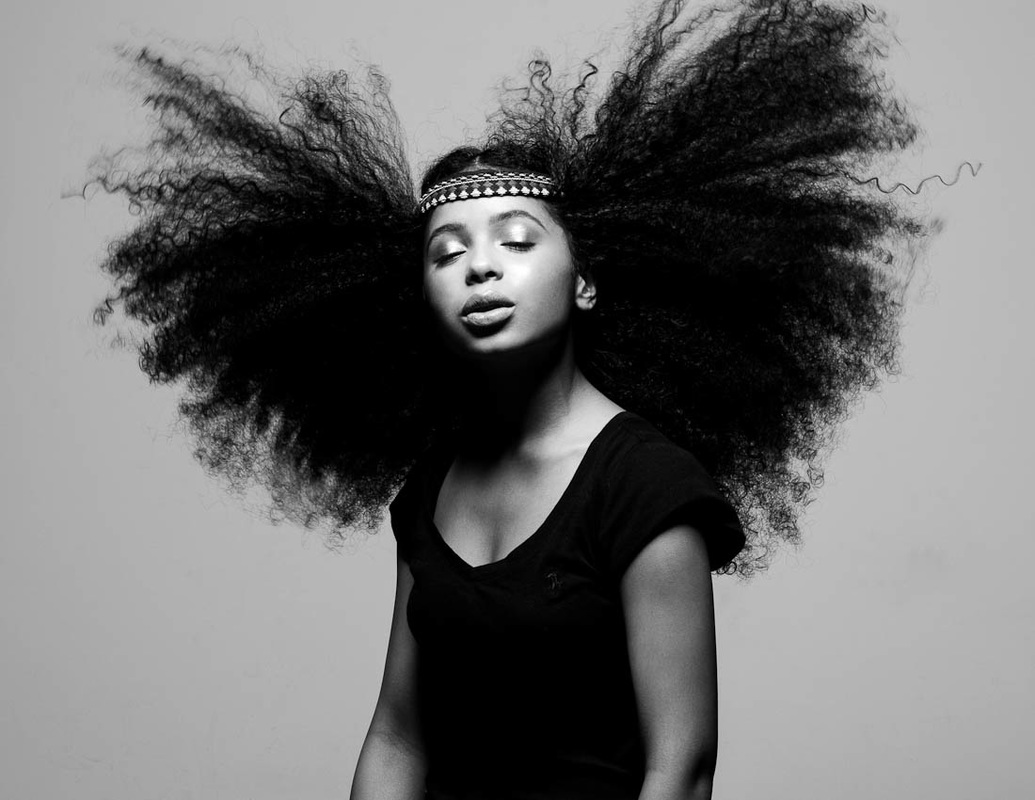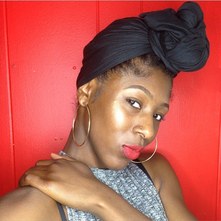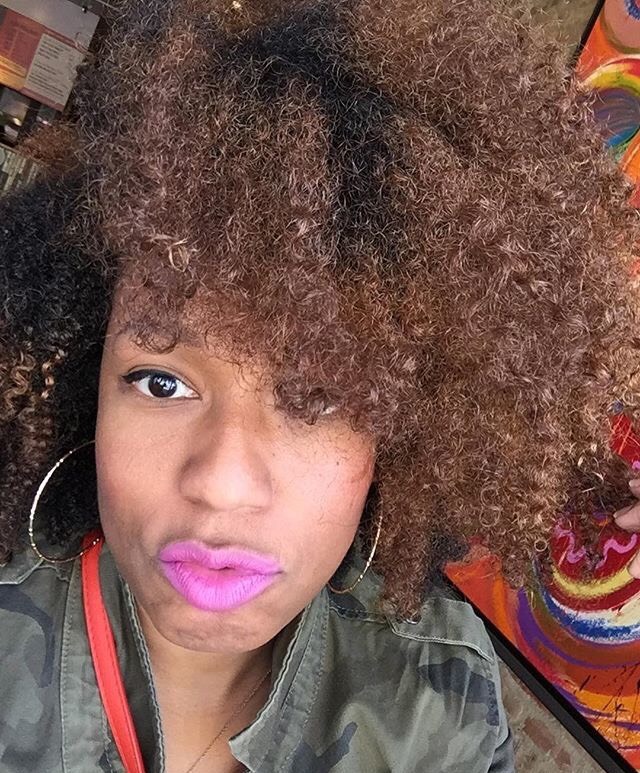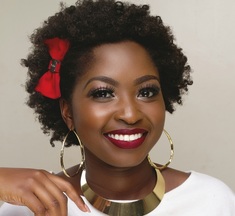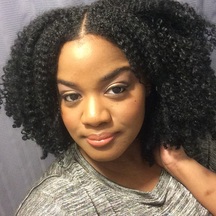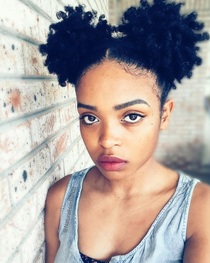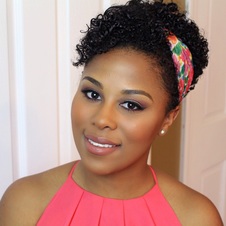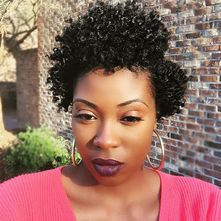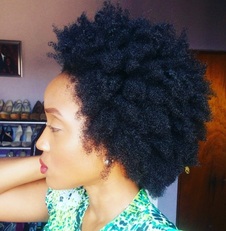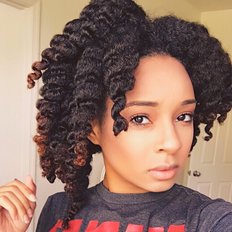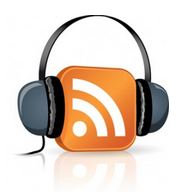|
Ah, the natural hair community. Such a wonderful community of fabulous ladies loving and caring for their God-given hair. Since its boom a few years ago, the community has continued to flourish with new techniques and products invented by Black women who have decided to reclaim their hair and image. There have now been more Black women in the media saying no to relaxers and sporting their natural curls than ever before. In the midst of this jubilee of natural hair acceptance, are there still some groups within the natural hair community that remain underrepresented? Do hair types such as thin hair remain in the shadows?
Thin natural hair seems to be an oxymoron within the natural hair community because when people reflect on natural hair, the image of a colossal afro frequently comes to mind. Natural hair only seems thick because curls combined with shrinkage give the illusion of fuller hair but in reality, many are still struggling to fully embrace the thinness of their hair. In the grand scheme of hair, many non-Black people might easily confuse thin natural hair as thick but within the Black community, thin hair does not fall into the Black standard of beauty. Although it is something to be celebrated that Black people are beginning to define their own standards of beauty, it cannot be ignored that not everyone falls under thick hair. Moreover, it should also be taken into account that although relaxer sales are going down, weave sales have remained strong. This is not to condemn any woman who chooses to wear weaves as it can be a great and creative protective style but it begs the question- do we sometimes promote an unrealistic perception of our hair? With the surge of natural hairstyles and flawless concealing methods rising in popularity over the past few years (e.g. Marley crochet, faux locs, clip ins, and weaves in our texture), it would be easy to falsely conclude that all, if not most, natural hair is thick and voluminous. It should be noted, however, that there is a difference between thin and fine hair. Thin hair falls into the category of having low density hair. If one’s hair is thin, then that person has less follicles of hair on one’s head and thus less hair in general. If one’s hair is fine, the diameter of the hair strand is smaller than medium or coarse textured hair. Many people might also fall into both categories.
With all this being said, the community of thin naturals has remained underdeveloped because of the lack of information and acceptance of this hair type. Although there are a booming number of naturalistas on blogs and YouTube, hardly any of them have showcased thin hair. This is not to say that this population does not exist, but many who struggle with this hair type find it difficult to fully embrace it and to display it on the Internet. Hopefully the lack of representation improves in the near future as more women begin to embrace the true nature of their hair.
Jumoke E. Ayo-Ajayi
10 Comments
Copyright: mimagephotography / 123RF Stock Photo
by treasuredlocks.com
As we get older, many of us have to face the fact our hair might want to start showing our age before we are ready. Our hair can begin to gray as early as in our teen years. Graying is fairly common by the time we are in our 30s and 40s. Having your hair dyed in a salon is certainly an option, but it’s expensive, time consuming and who knows what chemicals are used in those dyes? You could dye your hair at home, but again, you have the issue of knowing what’s in the product. And, there is the potential to damage your hair if you don’t do it right. If you’re not a trained professional, dying or relaxing your hair at home can put the health of your hair and scalp at risk. For many years people have been using natural hair dyes. These are usually henna based. These dyes can make hair darker (never lighter). Not only do they not damage the hair, they can actually make the hair healthier, smoother and easier to manage. They are an excellent product for those who can use them. The problem? Gray hairs can be stubborn and difficult to cover. Now there are products that are the best of both worlds. These are henna based dyes with just enough of the chemical components necessary to cover those stubborn grays. These products are easy enough and safe enough to be used at home. Using them saves both time and money. They contain herbs that enhance the health of the hair, while it’s being colored. They are not for everyone. They don’t damage hair partly because they have no ability to lift color. However, because they have no ability to lift color, they cannot make hair lighter. They can only change hair color so much. For example, if your hair is dark, they can add highlights like a reddish tint to it, but you will not be able to get a full red. If these products are suited to you, they are an excellent alternative to harsh chemical products, having to make an appointment and to the on-going expense of having your hair dyed on a regular basis. Many of our customers are freeing themselves from the salons and taking better care of their hair at home. Article courtesy of Treasured Locks, LLC Treasured Locks has been in business since 2002 providing expert advice and premium products for at home hair care. Treasured Locks specializes in the care of natural hair serving tens of thousands of customers all over the United States. For more information, please see www.treasuredlocks.com. If you’re interested in the products mentioned in the article, please visit this page.
Copyright: mimagephotography / 123RF Stock Photo

Grease on my sheets has never been an issue for me. Perhaps it's because I usually massage oil directly onto the scalp; or maybe it's because I have very dry hair that sucks it all in before I go to bed; or perhaps, my satin cap stops grease from flowing out.
Whatever the case I was asked the question so I decided to take a poll on the Facebook page to see what everyone else does and this was the overall conclusion: 1. Apply oil to the scalp Oils are great for sealing moisture in, however, if you're going to bed and you're worried about grease massage the oil directly onto the scalp to stimulate blood flow to the area and hence hair growth. Neno Natural's Hair Growth Stimulator is perfect for that kind of task. 2. Wear a satin cap They can be very effective. I have been using "Stay On Satin" bonnet and for the most part think they are good except for the black version. The black version runs and mixed with hair oils it has permanently spoilt my expensive cotton sheets. If your bonnet feels too tight, open another pack, they don't seem to all be identical in size but that's not a big issue for me because I bought them cheaply. 3. Double up - silk scarf plus satin bonnet This method works for some. Personally, I don't like to get too hot at night so I wouldn't opt for this, I'd rather have grease on my sheets! 4. Use a special pillow case If you want your hair loose and free some opt for a satin pillow case that they wash weekly. 5. Prepare hair hours before bed From my mega oil summary you'll know that some oils soak right through the hair fibre. This is true but the process takes some time. If you want the oil to soak into your hair before bed prepare your hair at least three hours before beddie bye byes! 6. Apply oils and moisturisers only in the morning That way you hair is less greasy before bed. That said if your hair is dry at night you should at a minimum spritz it with water and apply a very small amount of moisturizer. If your pillow does get very greasy, read How To Wash Grease Out Of Bedsheets. 
I should have posted this ages ago but life took over.
I got these braids done on June the 14th so I'll have had them for 4 weeks on July 12th. I think they still have two weeks in them so I'll only take them out on 26th June. I still wash my hair weekly except after I just put them in I waited two weeks before the first wash. These braids are great for hair growth because:
I got these done at a salon. I did allow my hair to be blow dried because as I've mentioned before I find that it leads to reduces tangling so that the braiding can be done faster with less resistance as the lines are drawn. What's slightly unique about the style is that we did single twists in the centre so that when my hair isn't tied up you don't see a gap. It also makes my head look fuller. I like to wear my style in one of two ways.
I always use a large scarf or a medium scarf to create my styles.
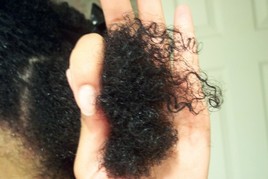
Apparently, and I say apparently because I can't say I noticed this myself but when you go from having relaxed hair to maintaining natural hair the initial texture experienced can be "wiry" and different to the natural hair that will eventually result. This wiry, transitional hair, is scab hair.
The term is not scientific and has nothing to do with actual scabs or sores. My personal opinion is that my new growth is very curly and over time the curl loosens as successive shampoos and styling reduce the ability for my hair to bounce back. This, to me is a little more plausible but who knows?

Get your FREE ebook on How To Grow Long, Healthy Natural Kinky or Curly Hair. 
When you moisturise your hair do you focus on the new growth or the tips of your hair?
It should be the hair tips. The tips of your hair are the oldest section and therefore the most vulnerable to breakage, split ends and fraying. Some fail to retain hair length because this weakness travels up the strand; the dry, weak ends fall off and expose more hair that wasn't vulnerable before leading to the same vulnerability and more breakage. To stop this from happening give the tips extra moisture. Even when your hair is in braids/twists hydrate the ends at least every other day with a hair cream. New growth is much less vulnerable to dryness because sebum (the oil naturally produced by the scalp) can travel part of the way up the hair shaft. The kinks, curls and coils of natural black hair make it difficult for this oil to travel all the way to the tips.
Although new growth is less vulnerable, I personally encourage my hair to grow by massaging our essential oil infused hair oil, Neno Natural's Hair Growth Stimulator, into the scalp. Even if you have braids with extra hair/mesh attached, treat the plaits as though they were your hair by spritzing daily and applying a leave-in conditioner, oil and cream regularly. Your ends will thank you by not breaking off. 

Sulfates are a detergent or if you want to use the fancy term, they are a "surfactant". They are regularly used in the formulation of shampoo.
If you have very oily hair or if your hair has a massive amount of product build up, they are okay to use. Almost every shampoo that is commercially available, however, contains sulfate. "Greasy" or oily hair is a common problem for white folk but black people tend to have the opposite problem, dry hair, so the omnipresence of sulfate containing shampoos can present a bit of a challenge! Why are sulfates bad for natural black hair?
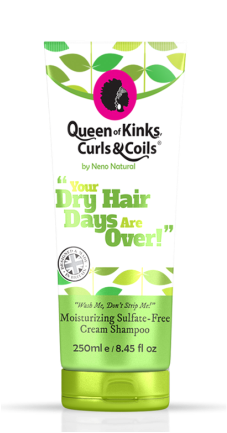
If you go for a sulfate-free shampoo you will be better able to retain moisture and this in itself will promote better growth of hair and better length retention.
That said, not all sulfate-free shampoos are made equal. Some manufacturers combine so many surfactants into one shampoo making it more harsh than a sulfate-containing one - sigh. Read this for tips on how to shop for a shampoo. Carol's Daughter Black Vanilla Moisture & Shine Sulfate Free Shampoo For Dry Hair and Dull Hair, with Aloe and Rose, is designed to clean your hair without stripping it of all the amazing natural oils.

Color treatments can potentially damage natural hair but if you take precautions particularly by having your hair colored by a professional they do not have to be.
A hair dye works by either removing, replacing or covering up the color pigment naturally found in your hair. Permanent synthetic dyes are more likely to weaken and damage hair than natural dyes and temporary hair rinses. Disadvantages of hair color
The healthier your natural hair is the more it will "accept" the hair color without damage. If your hair is fragile do not apply any color before speaking to a professional. Don't forget to deep condition at least weekly when you color your hair. A deep condition will keep the health of your hair in tip-top shape.
This is a VERY common problem, almost everyone including the super model Naomi Campbell has suffered from it but some have it a lot worse than others. Hair gets thinner or breaks around the edges for three main reasons:
SOLUTIONS 1. Don't wear anything too tightly around your head. Hair growth and health requires the delivery of nutrients and oxygen through the blood stream to the scalp. This delivery will not be obstructed if:
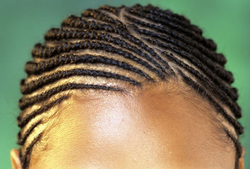 Oil edges & corn row lines to ease pressure from pulling. Oil edges & corn row lines to ease pressure from pulling.
2. Speak to your stylist if they're pulling too tight
3. Don't tie your hair up too tightly

4. Give extra moisture to hair around the sides
Envirionmental factors, such as wind, dry hair around the outside more than hair that is more centrally located. You need to compensate for this by giving peripheral hair more moisture, e.g. using a shea butter based cream or butter and locking that in with an oil. 5. Massage the edges regularly... ...to stimulate the flow of oxygen and nutrients to the affected areas. A good oil, e.g. Neno Natural's Hair Growth Stimulator will make this massaging more effective. Put a shower cap over your head for 15 minutes to maximise absorption of the essential oils. 6. Take care with the face scrubs, face creams and foundations! Finally, when you're having a bath/shower or putting on makeup protect the hair from those chemicals; don't rub the forefront more than is necessary with these cosmetics.
|
I now blog about wealth creation - so if you have any money questions meet me there, you can do all sorts of cool things like leave me a voicemail.
By Heather Katsonga-Woodward
I was a natural hair blogger and mixtress living between London & Chicago from 2012 to 2017. I always thought I was 4C but some say 4B; images below - you decide! Heather xx Categories
All
Archives
November 2016
|

